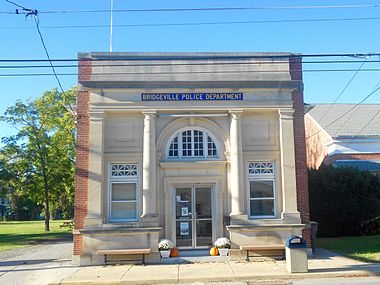Bridgeville Historic District | |
 St. Mary's Episcopal Church | |
| Location | Roughly bounded by Market, Main and Edgewood Sts., School House Ln., Maple Alley and the Delmarva Central Railroad tracks, Bridgeville, Delaware |
|---|---|
| Coordinates | 38°44′28″N75°36′06″W / 38.74111°N 75.60167°W |
| Area | 75 acres (30 ha) |
| Built | 1856 |
| Architectural style | Late 19th And 20th Century Revivals, Late 19th And Early 20th Century American Movements, Late Victorian |
| NRHP reference No. | 94000361 [1] |
| Added to NRHP | April 14, 1994 |
Bridgeville Historic District, also known as Lewisville and Lewis' Wharf, is a national historic district located at Bridgeville, Sussex County, Delaware. The district includes 166 contributing buildings and 70 contributing structures at Bridgeville, a center of agricultural commerce. The district is primarily residential with resources built from the second quarter of the 19th century through the Great Depression. The dwellings are in a variety of vernacular forms including the "I-house," Shotgun house, and late 19th and 20th century revivals. Located in the district and separately listed are the Bridgeville Public Library and Old Bridgeville Fire House. [2]
It was added to the National Register of Historic Places in 1994. [1]
- The former Bridgeville Public Library building
- This is the former police department building





